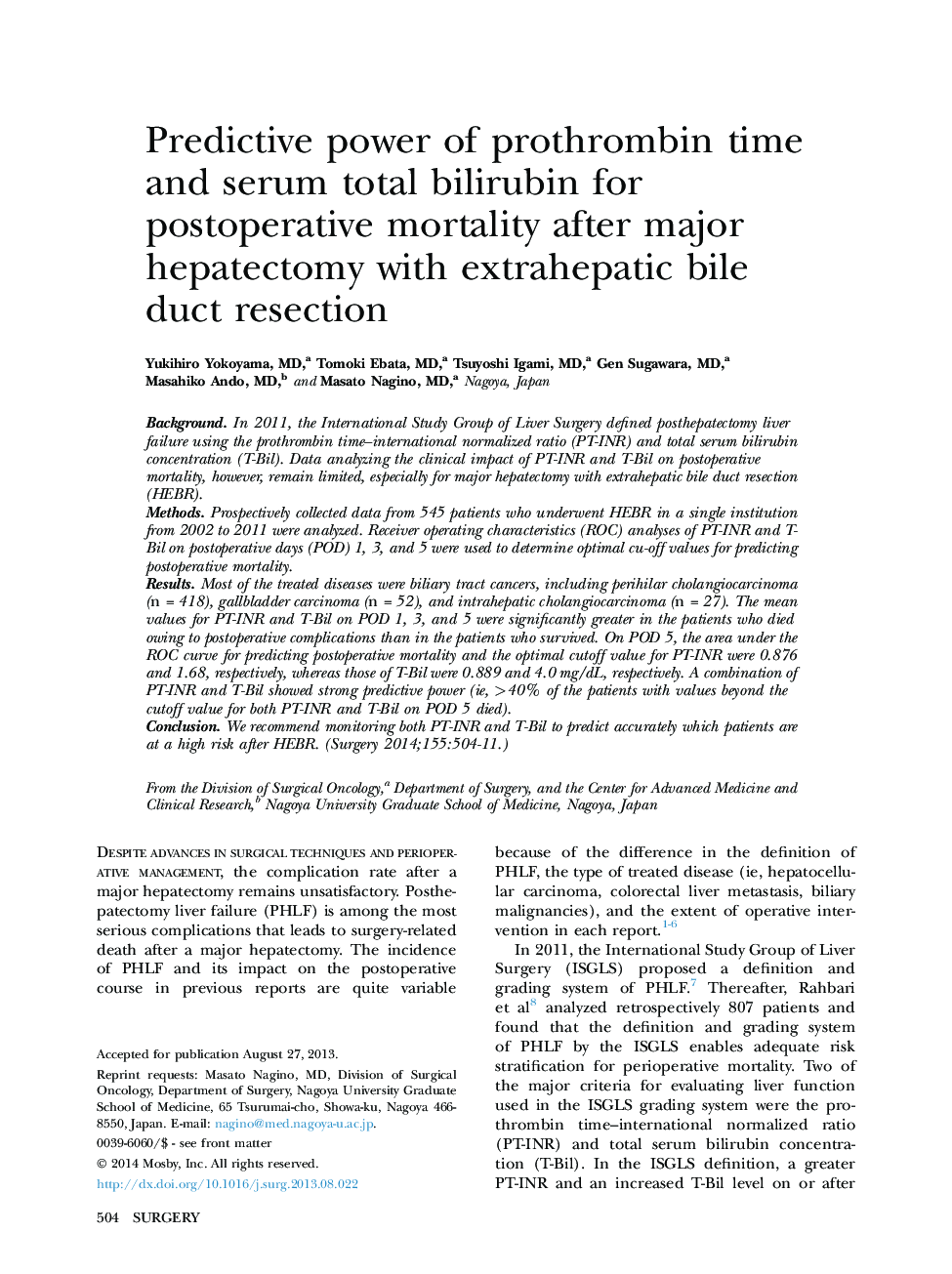| Article ID | Journal | Published Year | Pages | File Type |
|---|---|---|---|---|
| 6255598 | Surgery | 2014 | 8 Pages |
BackgroundIn 2011, the International Study Group of Liver Surgery defined posthepatectomy liver failure using the prothrombin time-international normalized ratio (PT-INR) and total serum bilirubin concentration (T-Bil). Data analyzing the clinical impact of PT-INR and T-Bil on postoperative mortality, however, remain limited, especially for major hepatectomy with extrahepatic bile duct resection (HEBR).MethodsProspectively collected data from 545 patients who underwent HEBR in a single institution from 2002 to 2011 were analyzed. Receiver operating characteristics (ROC) analyses of PT-INR and T-Bil on postoperative days (POD) 1, 3, and 5 were used to determine optimal cu-off values for predicting postoperative mortality.ResultsMost of the treated diseases were biliary tract cancers, including perihilar cholangiocarcinoma (n = 418), gallbladder carcinoma (n = 52), and intrahepatic cholangiocarcinoma (n = 27). The mean values for PT-INR and T-Bil on POD 1, 3, and 5 were significantly greater in the patients who died owing to postoperative complications than in the patients who survived. On POD 5, the area under the ROC curve for predicting postoperative mortality and the optimal cutoff value for PT-INR were 0.876 and 1.68, respectively, whereas those of T-Bil were 0.889 and 4.0 mg/dL, respectively. A combination of PT-INR and T-Bil showed strong predictive power (ie, >40% of the patients with values beyond the cutoff value for both PT-INR and T-Bil on POD 5 died).ConclusionWe recommend monitoring both PT-INR and T-Bil to predict accurately which patients are at a high risk after HEBR.
